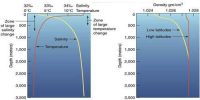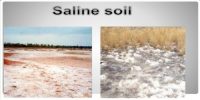The earth is composed of various kinds of elements. These elements are in solid form in the outer layer of the earth and in the hot and molten form in the interior. About 98 percent of the total crust of the earth is composed of eight elements like oxygen, silicon, aluminum, iron, calcium, sodium, potassium, and magnesium, etc.
Here explain some major minerals and their characteristics:
Feldspar
Silicon and oxygen are common elements in all types of feldspar and sodium, potassium, calcium, aluminum, etc. are found in specific feldspar variety. Half of the earth’s crust is composed of feldspar. It has a light cream to salmon pink color. It is used in ceramics and glassmaking.
Quartz
It is one of the most important components of sand and granite. It consists of silica. It is a hard mineral virtually insoluble in water. It is white or colorless and used in radio and radar. It is one of the most important components of granite.
Pyroxene
Pyroxene consists of calcium, aluminum, magnesium, iron, and silica. Pyroxene forms 10 percent of the earth’s crust. It is commonly found in meteorites. It is green or black in color.
Amphibole
Aluminum, calcium, silica, iron, magnesium are the major elements of amphiboles. They form 7 percent of the earth’s crust. It is in green or black color and is used in the asbestos industry. Hornblende is another form of amphibole.
Mica
It comprises potassium, aluminum, magnesium, iron, silica, etc. It forms 4 percent of the earth’s crust. It is commonly found in igneous and metamorphic rocks. It is used in electrical instruments.
Olivine
Magnesium, iron, and silica are major elements of olivine. It is used in jewelry. It is usually a greenish crystal, often found in basaltic rocks. Besides these main minerals, other minerals like chlorite, calcite, magnetite, haematite, bauxite, and barite are also present in some quantities in the rocks.
Iron
Iron helps make hemoglobin (the oxygen-carrying chemical in the body’s red blood cells) and myoglobin (a protein in muscle cells). Iron is essential for activating certain enzymes and for making amino acids, collagen, neurotransmitters, and hormones.
Magnesium
Magnesium, like calcium, builds bones and teeth. It also helps to regulate blood pressure and blood sugar and enables muscles to contract, nerves to send messages, blood to clot, and enzymes to work. Manganese helps form bones and helps metabolize amino acids, cholesterol, and carbohydrates.
Sulfates
Sulfate minerals contain sulfur atoms bonded to oxygen atoms. Like halides, they form where saltwater evaporates. The sulfate group contains many different minerals, but only a few are common.
Common physical properties of minerals include:
- Color: the color of the mineral.
- Streak: the color of the mineral’s powder.
- Luster: the way light reflects off the mineral’s surface.
- Specific gravity: how heavy the mineral is relative to the same volume of water.
- Cleavage: the mineral’s tendency to break along flat surfaces.
- Fracture: the pattern in which a mineral breaks.
- Hardness: what minerals it can scratch and what minerals can scratch it.















